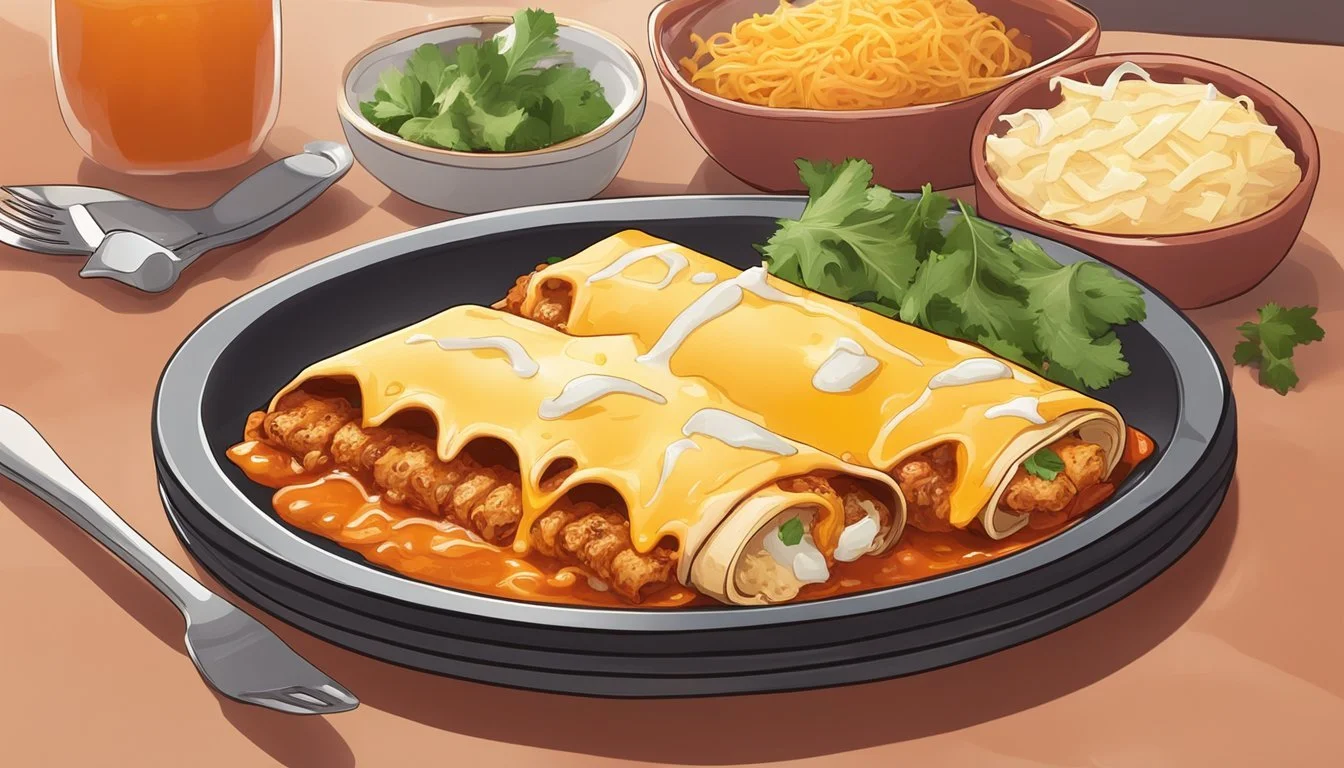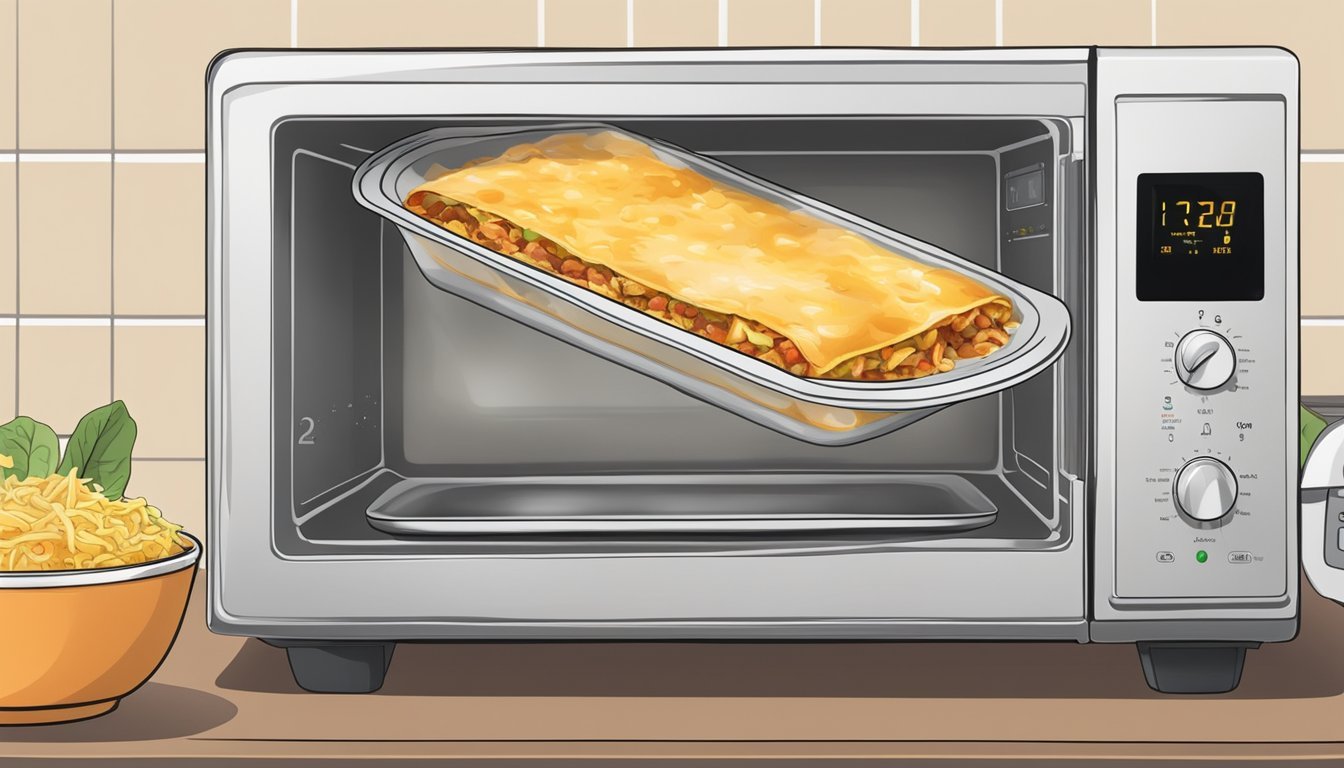How Long Do Chicken Enchiladas Last?
Storage Tips and Shelf Life
Cooking a delicious batch of chicken enchiladas is always a satisfying endeavor, yet a common question lingers: how long do these delectable leftovers last? Chicken enchiladas can be safely stored in the refrigerator for up to four days, according to the United States Department of Agriculture (USDA). Ensuring they're kept at the correct temperature is crucial for maintaining both safety and quality.
In addition to fridge storage, the freezer offers a longer-term solution. When properly wrapped and stored, chicken enchiladas can last up to three months frozen. This makes them an excellent choice for meal prep enthusiasts looking to enjoy a flavorful dish on a busy weeknight without compromising on taste.
Understanding the lifespan of your chicken enchiladas not only maximizes their deliciousness but also minimizes waste. By leveraging these storage tips, anyone can enjoy their homemade enchiladas while ensuring optimal safety and flavor.
Understanding Chicken Enchiladas
Chicken enchiladas combine the rich flavors of chicken, enchilada sauce, cheese, and various fillings wrapped in tortillas. The freshness and quality of these ingredients significantly affect the overall flavor and texture.
Key Ingredients and Variations
Chicken enchiladas typically use shredded chicken, which can come from cooked chicken breasts or store-bought rotisserie chicken. Essential components include enchilada sauce (red or green), varying based on personal preference. Cheese like cheddar or Monterey Jack adds richness.
Tortillas can be corn or flour, each offering different textures—corn being firmer and more traditional, while flour is softer. Common additions include beans, bell peppers, and onions.
Many variations exist, such as green chili chicken enchiladas, which use green chiles for a spicy kick. Shredded beef or vegetarian options with more beans and veggies are also popular.
The Role of Freshness in Flavor and Texture
Freshness plays a crucial role in the appeal of chicken enchiladas. Fresh cheese melts better, providing a creamier texture. Fresh vegetables like onions and bell peppers retain their crunch and vibrant flavors.
Freshly cooked enchilada sauce enhances the dish's taste profile more than canned options. Using fresh, shredded chicken, especially from roasted breasts or rotisserie chicken, ensures tenderness and juiciness.
The freshness of tortillas impacts the texture—older tortillas may become dry or brittle, affecting the overall mouthfeel of the enchiladas. Thus, using fresh, high-quality ingredients is key to perfecting the flavor and texture of chicken enchiladas.
Storing Chicken Enchiladas
Proper storage ensures chicken enchiladas remain fresh and safe to consume. Methods for refrigeration and freezing are outlined below to help you maximize their shelf life.
Refrigeration Best Practices
For optimal freshness, store chicken enchiladas in an airtight container. This helps maintain moisture and prevent contamination. Place the container on a central shelf of the refrigerator, away from the door, to maintain a consistent temperature.
Proper cooling after cooking is critical. Let the enchiladas cool to room temperature within two hours before refrigerating. Label containers with the storage date to monitor freshness. Follow these guidelines for refrigeration:
Shelf life: 3-5 days
Temperature: Below 40°F (4°C)
Freezing for Longevity
For extended storage, freezing chicken enchiladas is effective. Use appropriate containers or heavy-duty aluminum foil to prevent freezer burn.
Before freezing, ensure enchiladas are cooled thoroughly. When ready to store, wrap each enchilada separately or place them in a single layer in a freezer-friendly dish. Ensure airtight seals to avoid freezer burn and maintain quality. Label with the freezing date:
Shelf life: Up to 3 months
Temperature: 0°F (-18°C) or lower
When ready to consume, thaw enchiladas in the refrigerator overnight. Reheat in the oven at 350°F (175°C) until they reach an internal temperature of 165°F (74°C) to ensure safety. Such methods retain both taste and structural integrity.
Reheating Leftover Chicken Enchiladas
When it comes to reheating leftover chicken enchiladas, both the oven and microwave offer convenient methods. Each technique ensures your enchiladas are hot and maintain a good texture without drying out or becoming soggy.
Oven Reheating Technique
Preheating the oven to 350°F (175°C) is essential. Place the enchiladas on an oven-safe dish, ensuring they're spaced evenly. Cover the dish with aluminum foil to retain moisture. Bake for 15-20 minutes, checking halfway through.
Remove the foil in the last few minutes to let the cheese on top get bubbly and crispy. Always ensure the internal temperature reaches 165°F (74°C) to guarantee your leftovers are safely heated. This method helps maintain the best texture, making them taste almost freshly baked.
Microwave and Toaster Oven Method
For quicker reheating, a microwave offers speed, while a toaster oven combines speed with a better texture. In the microwave, place a single serving on a microwave-safe plate. Cover it with a splatter guard and reheat on high for about 2-3 minutes, rotating halfway through.
Check and adjust the time as necessary. Alternatively, preheat the toaster oven to around 350°F (175°C). Place the enchiladas in a dish suitable for the toaster oven and heat for 15-20 minutes. The toaster oven prevents the enchiladas from becoming soggy, preserving a better texture closer to oven reheating.
Recognizing Spoilage
Determining if chicken enchiladas have spoiled is crucial for avoiding foodborne illnesses. Look for specific signs of spoilage and prioritize food safety to ensure leftovers are still safe to eat.
Signs of Spoilage
Spoiled chicken enchiladas exhibit several key indicators. Mold growth is a primary sign; any visible mold means the leftovers should be discarded immediately. Unpleasant odors, such as sour or rotten smells, suggest the presence of harmful bacteria. Texture changes, such as sliminess or excessive softness, indicate spoilage. Watch for any color changes too; discolored spots are a red flag.
Food Safety
Food safety is critical when handling leftover enchiladas. Store them properly in airtight containers in the fridge to reduce bacterial growth. Consume within four days to minimize the risk of foodborne illness. Understand that harmful bacteria like Salmonella and E. coli can proliferate if not stored correctly. Always reheat leftovers to an internal temperature of 165°F (74°C) to ensure safety.
Creating the Best Chicken Enchiladas
Master the process of making delightful chicken enchiladas and discover the best sides to complement your dish. From achieving the perfect filling to pairing the enchiladas with flavorful accompaniments, every detail matters.
Mastering the Chicken Enchilada Recipe
To prepare exceptional chicken enchiladas, start by preheating the oven to 350°F. Sauté finely chopped onion and garlic in a skillet until tender, then add diced chicken and green chiles. Season with chili powder, cumin, and salt.
Next, warm tortillas to make them pliable and fill each with the chicken mixture. Roll them up and place seam-side down in a casserole dish. Pour red or green enchilada sauce generously over the top and sprinkle with shredded cheese. Bake for 20-25 minutes until bubbling and the cheese is golden.
Choose between variations like green chili chicken enchiladas or creamy chicken enchiladas by adjusting your sauces and seasonings. Add black beans or corn for extra texture and vitamins, ensuring your dish remains both flavorful and nutritious.
Recommended Accompaniments
Pair your chicken enchiladas with sides that enhance their rich, cheesy flavors. Fresh salsa, whether traditional or salsa verde, adds a tangy contrast. Offer guacamole and sour cream for creamy complements. A sprinkle of fresh cilantro and sliced avocado add color and additional nutrients.
For a complete meal, consider serving with a side of Mexican rice or refried beans. Both options are excellent for balancing the protein-rich enchiladas. For those following special diets, ensure your sides are gluten-free or free from other allergens as needed.
Philosophy or preferences can dictate the choice of accompaniments, but the goal is to create a harmonious and satisfying dining experience.







